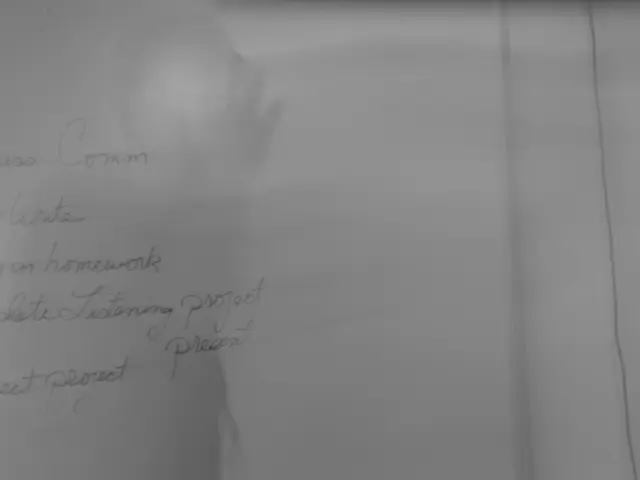What's the Scoop on Price Action?
Stock Trading Technique: Understanding Price Action and Its Application in Stock Markets
Price action is all about tracking a security's price fluctuations as it unfolds over time. It's the foundation upon which technical analysis is built, providing insights for traders to make shrewd decisions when it comes to stocks, commodities, or any other asset.
Short-term traders rely heavily on price action, scrutinizing trends and formations to guide their trade choices. And let's be honest, technical analysis has price action as its root since it depends on past prices to generate trading signals.
Got the Deets?
- Price action reveals the changes in a security's price trajectory.
- By tweaking the chart's composition, traders can enhance the visibility of price action patterns, especially when examining price data across varying time periods.
- Majority of technical analysis structures and chart patterns come straight from price action.
- Technical analysis tools like moving averages are also based on price action data and used to predict future trade opportunities.
- Although past price action isn't an official guarantee of future results, some traders use historical price action patterns to make educated guesses about where a security's price might go next.
Time to Learn the Ropes
You can view and decode price action by looking at charts that plot prices over time. Traders utilize diverse chart layouts to pick up on trends, breakouts, and reversals more easily.
Candlestick charts are a popular choice as they provide an enhanced perspective of price movements, displaying open, high, low, and close values alongside up or down sessions.
There are many candlestick patterns in the price action playbook, including:
- Hammer – Small body with a long lower wick, indicating a potential bullish reversal at downtrend bottoms.
- Hanging Man – Identical to the hammer but at uptrend tops, signifying weakening bullish momentum.
- Shooting Star – Small body near lows with a long upper wick, suggesting a failed bullish breakout and a potential bearish reversal at uptrend tops.
- Gravestone Doji – No body, long upper wick, and flat base, signifying extreme bearish rejection after rallies.
- Marubozu – No shadows and full body, indicating strong momentum in either direction with no pullbacks.
- Spinning Top – Small body with equal upper and lower wicks, indicating market indecision or potential trend reversal.
There are also multi-candle patterns like Bullish/Bearish Engulfing and ABCD Pattern that help traders identify continuation or retracement phases with precise entry points.
Making a Play
Price action isn't a standalone trading tool like an indicator, but rather serves as the data source from which all tools are born. Swing and trend traders primarily interact with price action, focusing on support and resistance levels to foresee breakouts and consolidations.
Even these traders must pay heed to additional factors beyond the current price since the volume of trading and the periods used to establish levels all impact the likelihood of their interpretations being accurate.
Many institutions have been making use of algorithms to analyze past price action and execute trades in specific circumstances. According to a 2020 report to Congress, the "use of algorithms in trading is pervasive." These automated systems get fed price action data and can deduce outcomes and determine potential future price action.
What's the Catch?
Interpreting price action is subjective, and there's a good chance that two traders might arrive at different conclusions when analyzing the same price action. For example, one trader might spot a downtrend, while another might find evidence of a potential near-term turnaround. The time period being used has a significant impact as well, as a stock can display numerous intraday downtrends even when there's a month-over-month uptrend.
Trading predictions based on price action are speculative in nature, and it's wise to use multiple tools to confirm any predictions you make. It's also important to remember that the past price action of a security is no guarantee of future price action.
High-probability trades still come with risks, and traders take these risks in hopes of accessing potential rewards. Price action doesn't necessarily incorporate macroeconomic or non-financial factors affecting a security either.
In Plain English
Price action is drilling down on an asset's price movement over time to analyze trends and identify entry and exit points when trading. Many traders utilize candlestick charts to dissect prior price action and predict potential breakout and reversal patterns. Although past price action doesn't guarantee future results, traders often examine a security's historical patterns to better gauge where the price might be headed next.
- Technical analysis heavily relies on price action for insights in trading stocks, commodities, or any other asset.
- Majority of technical analysis structures and chart patterns are derived from price action.
- Price action patterns can be enhanced for better visibility by adjusting chart composition and examining price data across varying time periods.
- Technical analysis tools like moving averages are based on price action data and used to predict future trade opportunities.
- Although past price action isn't an official guarantee of future results, some traders use historical price action patterns to make educated guesses about future price trajectory.
- Candlestick charts are a popular choice among traders for viewing and decoding price action, with several patterns helping traders identify continuation, retracement, or potential reversal phases in price movement.




